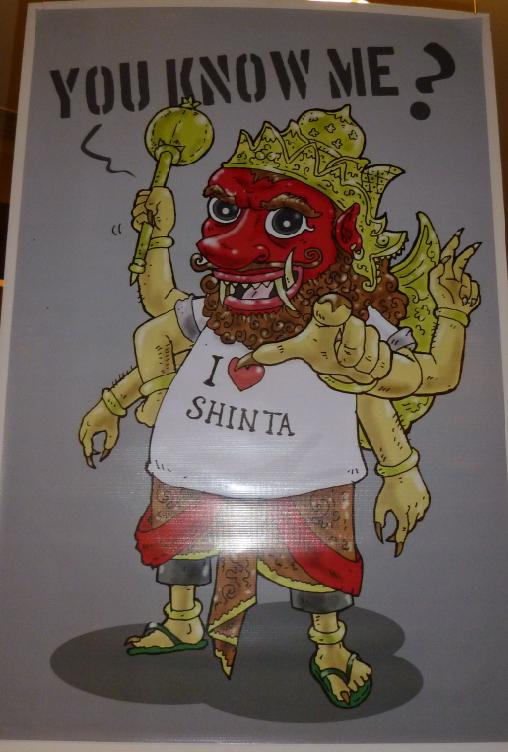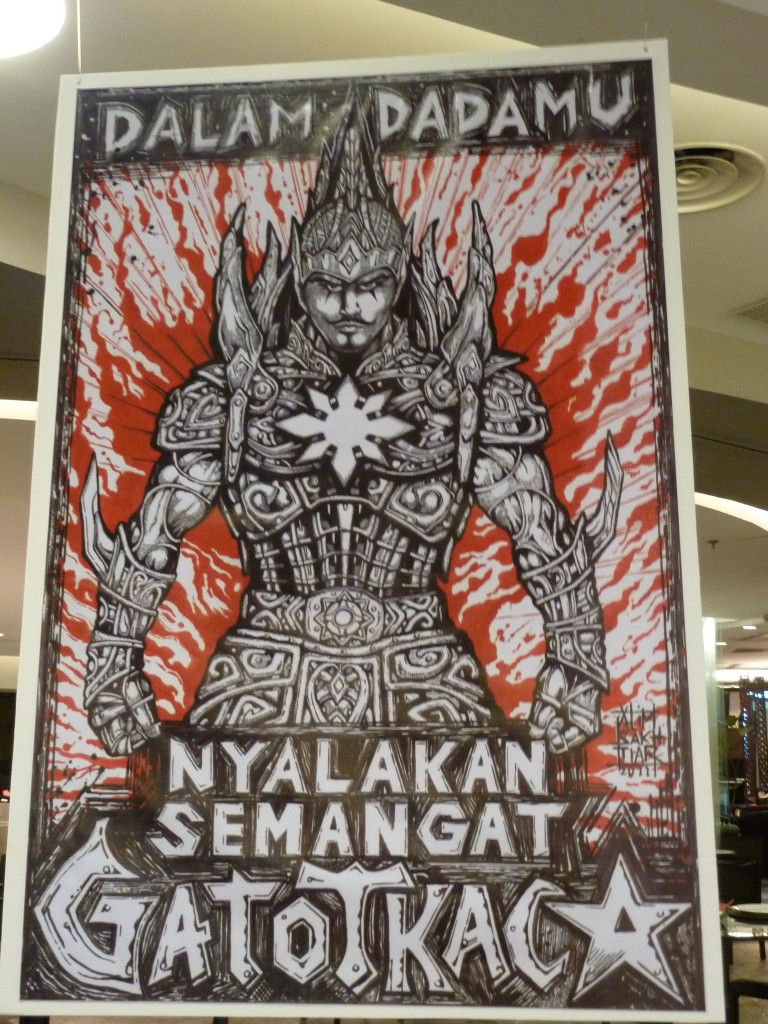I spied this fun poster promoting the Wayang Orang Bharata at a mall in Jakarta. Wayang Orang is a form of a traditional drama performance originally from Java based on the stories from the Mahabarata and Ramayana.
One of Indonesia’s unique art forms is wayang (traditional puppetry), influenced by Hinduism, and the history of which can be traced as far back as the 9th Century in Indonesia. There are many types of wayang, from the wayang kulit (shadow puppet) to the wayang topeng (masked puppet) to the famous wayang wong or wayang orang.
In wayang orang, the dalang (narrator and troupe leader) only provides a suluk (prelude) to the story, and the performers dance, sing and speak — usually in Javanese — to act out the drama.
Want ringside seats to this very special performance:
Wayang Wong Bharata Jl. Kalilio 15 Senen, Central Jakarta Tel: (021) 706 42535
Ghatotkacha is one of the super heros in Indonesia and many stories are enacted featuring Bhima’s son Ghatotkacha, who was half-Rakshasa (giant), and had many magical powers.







15 Oct. 2011
Dear Poonam,
Very much reminds me Tagore’s letter to Mr Amiya Chakraborty which I quote below.
Rajat Das Gupta
Islam and Mahabharat
Dear Amiya,
My visits here are nearly over. It was my wonder to observe their people’s theatre, clumsily integrating Indian fragments. I had written you before how Ramayana and Mahabharata are animated in their life. Because it is living, it is not a prototype of any documented literature. It had drastic metamorphosis through thoughts and imaginations of the people here. They did not get in store in any scriptural sermon all the principles of life, but had those embodied in the characters of these two epics. The yardsticks to judge good and bad in the humans are these characters. So, with dynamics of life its prerequisites have changed variously. It is like oral transformation of Vidyapati and Chandidas’ (poets of mediaeval Bengal) compositions relayed down by the Bengali musicians from age to age. Yesterday we went for a shadow show. Its typed story was given to us. I’m sending it for your eye. Translate it into Bengali and judge it vis-à-vis the original Mahabharata. The distinction of the story is, there is no Draupadi (the central polyandrous female character of this epic having all the five Pandava brothers as her husbands) in the story. The neuter Brihannala of Mahabharata has been named ‘Kenobordi’ as a female. Kitchaka was beguiled by her beauty and fell victim to Bhim (the 2nd Pandava). This Kitchaka is enemy of the fish-king in Javani Mahabharata. Pandavas, by exterminating him, earned the gratitude of the King Birat.
The balcony of the palace of the king titled as ‘Monkunagro’, where I am sitting now to write this letter, abounds with Ramayana stories beautifully drawn on silk to be seen all around on the foundation pillars. But, they are Muslims by religion. Yet, they know ins and outs of the Hindu deities. They have taken as their own all the ancient streams of the India narratives.. In fact, there is nothing wrong in it, as the characters of Ramayana and Mahabharata in abstraction are roaming around in their land. Rather, they do not have such all pervasive camaraderie in our country., where they do not figure in all their festivals as at every home here.
[Written to Amiya Chakraborty while on Java trip: 17 Sept. 1927]